This course developed skills in the Python programming language, and all of its capabilities, including mathematical calculations, spreadsheet reading & writing, streaming from Twitter, data visualization, and web scraping. The final exercise combined a number of these skills– every student chose a website containing a database, and wrote a code to scrape data from it. The resulting spreadsheet could then be visualized using maps and charts.
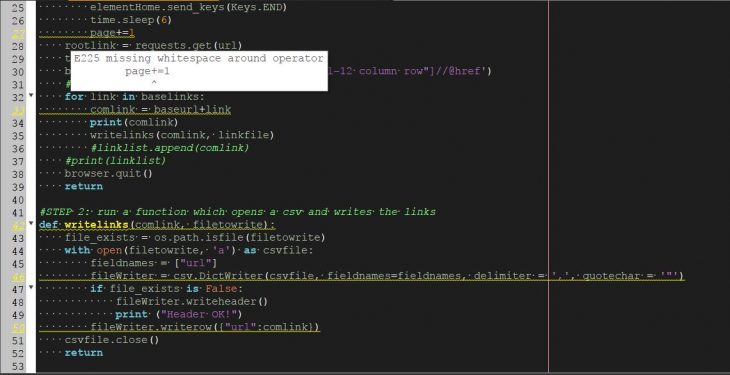
Python source code, using the Ninja IDE

Cleaned & sorted data in a csv spreadsheet
The Fortune 500 is Fortune Magazine’s yearly compendium of the biggest companies in the United States of America, ranked by revenue. Other details of the companies are included such as their sector, profits, and number of employees. What sorts of relationships can be gleaned from charting these data points?
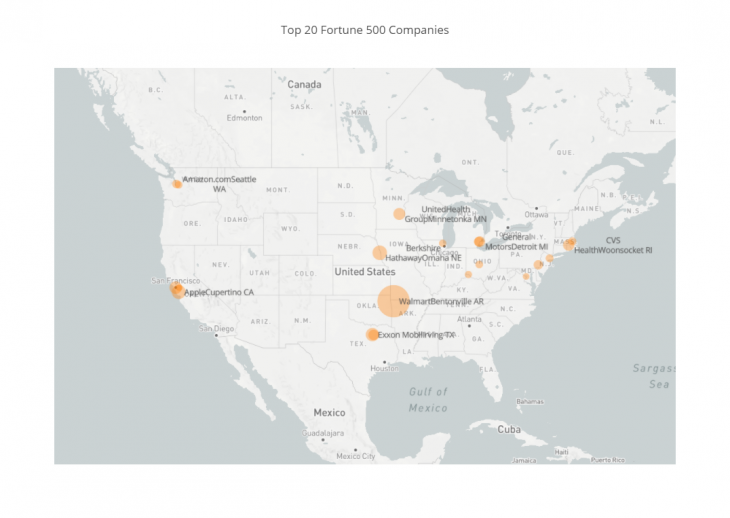
Some notable takeaways:
1) As expected, the San Francisco Bay Area and the Northeast region between Washington DC and Boston MA are represented, but the top two companies are located in the center of the country: wholesaler Walmart and Warren Buffet’s investment company Berkshire Hathaway. Perhaps they are able to grow because of ample space and distance from competition.
2) Unlike China, which represents multiple places atop Fortune’s Global 500 List but is heavily skewed towards the Energy sector, companies in the USA are more varied than instinct might suggest. No sector appears more than 3 times (Wholesalers).

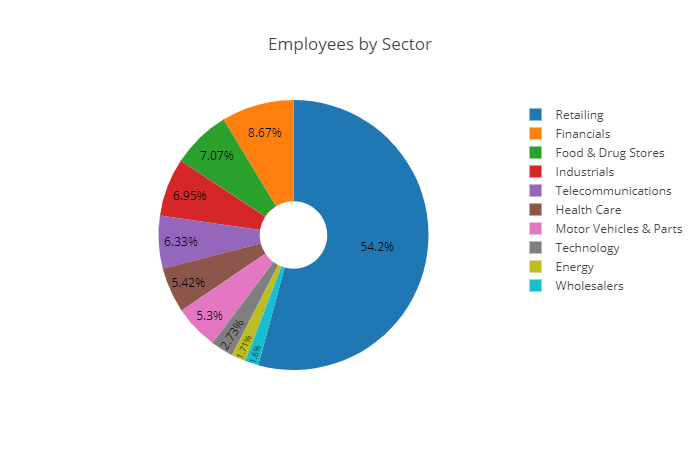
3) On average, a company’s profits are 5% of its revenue. Which companies deviated the most from this mean? At the high end: Apple, a young innovative tech company, whose profits were over 20% of its revenue. At the low end: Chevron, an old-guard oil company, which saw negative profits in 2016. Walmart’s & Apple’s outlier positions in the scatter chart (the last chart on this page) show that profit is not necessarily related to the amount of people you employ.

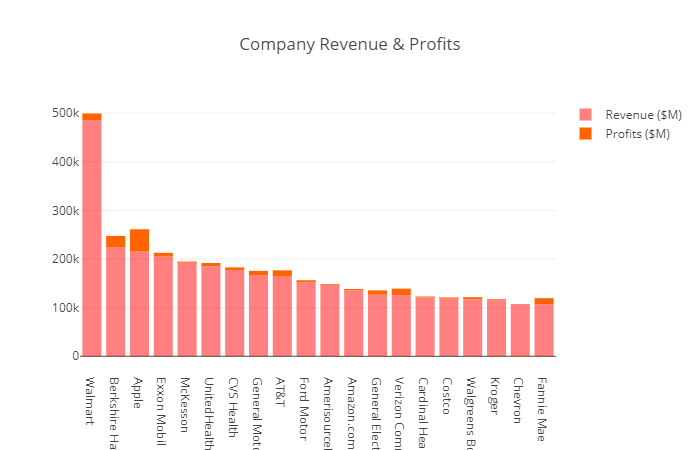
4) Walmart is an astonishing outlier in multiple regards. It blows away the competition both on revenue and employees. Could recent increases in cheap imported products from Mexico and China be a part of its continued success of providing a wide array of cheap goods to consumers? On the flipside, Apple employs a relatively small amount of people yet ranks #3 in revenue, and posted over 20% of that revenue as profits, perhaps signaling its low operating costs. Does higher tech correlate with lower overhead?
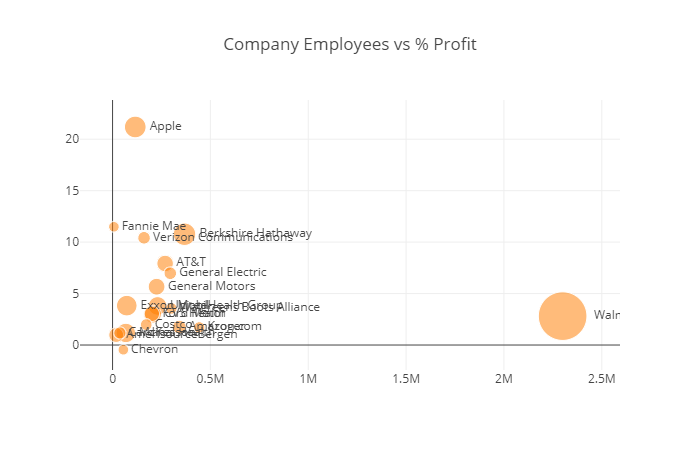
Charting The Fortune 500 is a project of IAAC, Institute for Advanced Architecture of Catalonia, developed at MaCT (Master in City & Technology), 2017-18 by:
Students: Ivan Himanen
Faculty: Andre Resende